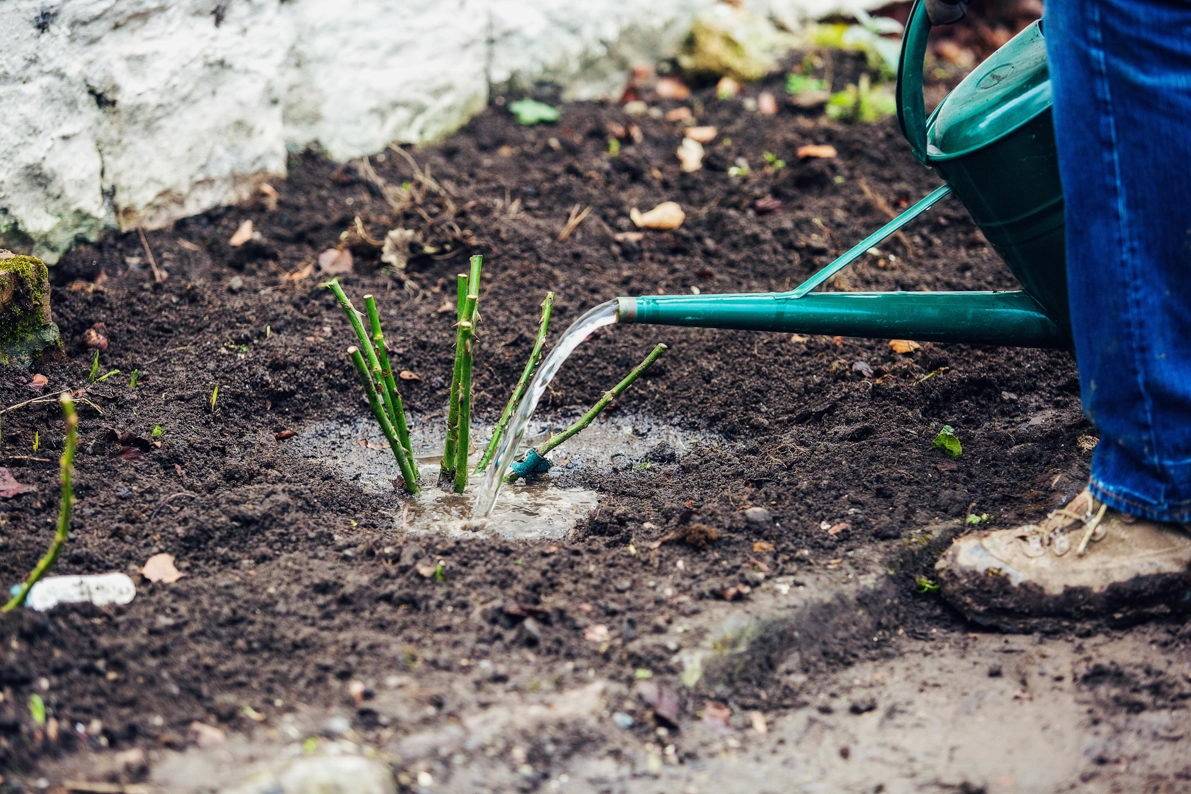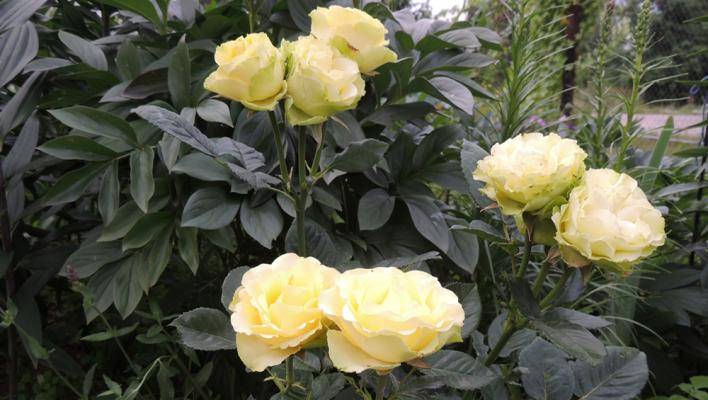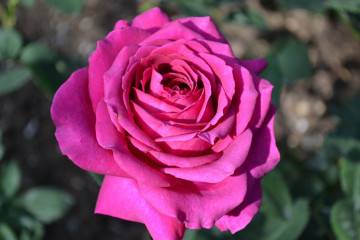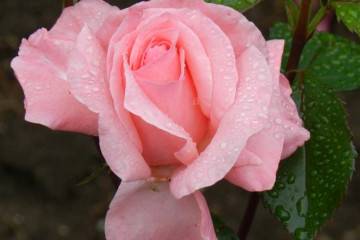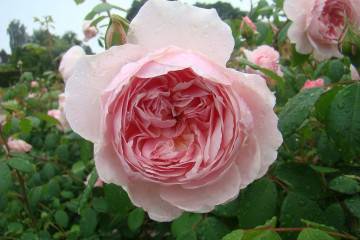Rose Limbo (Limbo) - characteristics of a varietal plant
Content:
Rose Limbaugh is a beautiful ornamental plant, characterized by yellow buds with a greenish tint. The culture belongs to the category of hybrid tea roses. Today it is very popular with gardeners. To achieve the desired color of the petals, the plant needs appropriate care.
Rose Limbo (Limbo) - what kind of variety, history of creation
This variety belongs to the cut-off group. It was bred back in 1999 in Germany. The rose appeared thanks to the efforts of the famous scientist Wilhelm Cordes. For the unusual color of the petals, the culture is often called the dollar rose.
According to the description, the plant is characterized by compact bushes. Their height is 80 cm, and their diameter is 60 cm. In appearance, the plants resemble a cone. The culture has powerful and straight shoots that practically do not have thorns. They are decorated with large leaves with a glossy surface. The plant does not tolerate pruning.
The key feature of the climbing rose Limbo is the unusual color of the petals. This shade is often called green, lemon, salad, lime. Experienced growers consider it light yellow with a green tint. Under the influence of the sun, the petals fade, becoming almost white.
The buds have a conical shape and wavy edges. Fully opened inflorescences reach 9 cm in diameter. They are densely doubled and contain 47 petals. Rose has a very pleasant and light scent. During the season there are two waves of flowering of the plant. The first flowers appear at the end of June, the second wave occurs at the end of August.
Advantages and disadvantages of the variety
The plant is distinguished by its rapid development in spring and a long flowering period. The bushes retain their decorative effect for several months.
At the same time, the culture has some disadvantages. These include long-term adaptation of seedlings and slow blooming of buds.
Use in landscape design
The culture is characterized by an unusual color, therefore it can be quite difficult to choose a place on the site. The plant is not recommended to be combined with other crops. It is best used for single landings. A good combination is obtained with coniferous bushes and trees.
Growing a flower in the open field
In order for the culture to bloom magnificently and profusely, attention must be paid to the correct carrying out of planting work. It is recommended to use seedlings for planting. High-quality planting material at the age of 2-3 years should have 4-5 powerful shoots 25-30 cm long and the same root length. The latter should be flexible and have white or creamy cuts. There should be no signs of rot or mold on the bushes.
Choosing a place to plant a rose
In temperate climates, the Limbo rose is planted in spring. It is recommended to do this in the second half of May. In the south, the procedure can be carried out in the fall. It is better to do this before mid-October.
The plant needs to comply with the following conditions on the site:
- The presence of a slight penumbra. To achieve a green color of the petals, the crop should be planted in the shade.At the same time, the lack of sun provokes a violation of the growth of culture. Therefore, it is recommended to plant the rose in an open place, but during the period of maximum solar activity, it must be shaded.
- Lack of drafts. The culture does not like sharp gusts of wind. Therefore, it should be planted near a wall or fence.
- The temperature is at + 23-28 degrees. In hot weather, the development of the bush stops.
- Loose and nutritious substrate. In heavy soil, there is a risk of plant death.
How to prepare the soil and flower for planting
For the plant, you need to dig a hole 50 cm in size. A drainage layer 5-7 cm thick must be placed on the bottom. Then fill the hole with soil for roses. If the roots of the plant are weakened or damaged, they are pruned. This ensures the acceleration of their growth in the future.
After planting, the bush is watered abundantly, and the trunk circle is mulched.
Plant care
In order for a plant to grow and develop normally, it needs to provide complete and high-quality care. The rose should be watered once a week. The frequency of soil moisture should be selected taking into account the appearance of the bush and the dryness of the soil. With a moisture deficit, bright, but small flowers appear on the bushes. Young plants need more moisture.
The bushes need to be fertilized every two weeks. The first top dressing is applied in the spring. It is best to alternate minerals and organics. The culture thrives on well-drained soil types. Acidity parameters should be at the level of 5.6-7.3.
In order for the bush to retain its shape, it must be systematically pruned. This removes dry and diseased shoots. Usually, pruning is done in the spring before the juices start moving. It can also be done in the fall after flowering is complete.
Features of wintering a flower
For a plant to develop normally, it must be properly prepared in a healthy state. To do this, it is recommended to cover the roots with mulch using peat and humus. From above, the bushes should be covered with any insulation.
Blooming rose
The culture is characterized by single goblet inflorescences that have a delicate aroma. The flower has a creamy center and retains its freshness for a long time. Flowering begins in June and continues until the very frost. Then the rest period begins.
The Limbo rose is characterized by persistent inflorescences that do not crumble on their own. Therefore, it is recommended to harvest wilted buds by hand. After flowering, the bushes need to be cut to shape and remove dried shoots.
What to do if it does not bloom
The lack of flowering is observed in such situations:
- insufficient amount of nutrients in the soil;
- neglect of pruning;
- improper preparation for winter.
Flower propagation
The simplest and most affordable method of cultivating a culture is considered to be cuttings. Sometimes the plant is propagated by seed or by dividing the bush.
Cutting is recommended in early July. To do this, prepare cuttings 15-16 cm in size. They should have 3-4 buds. Cuttings need place in the ground at a slight slope. After planting, cover with a bottle to obtain a greenhouse effect.
Diseases, pests and ways to control them
Most often, the rose suffers from leaf rollers, aphids, caterpillars. It is also affected by sawfly larvae. Caterpillars will help destroy pesticides, leaf rollers must be collected by hand. Aphids and ants are destroyed with insecticides.
Of the diseases, the rose is more susceptible to rust, powdery mildew and black spot. Timely pruning and spraying with fungicides helps to cope with them.
Hybrid tea rose Limbo is a popular plant that has excellent decorative properties. For a crop to be successful, it needs quality care.



